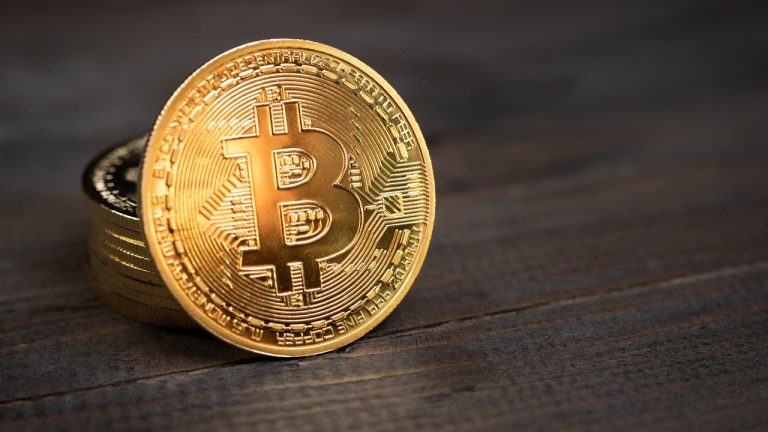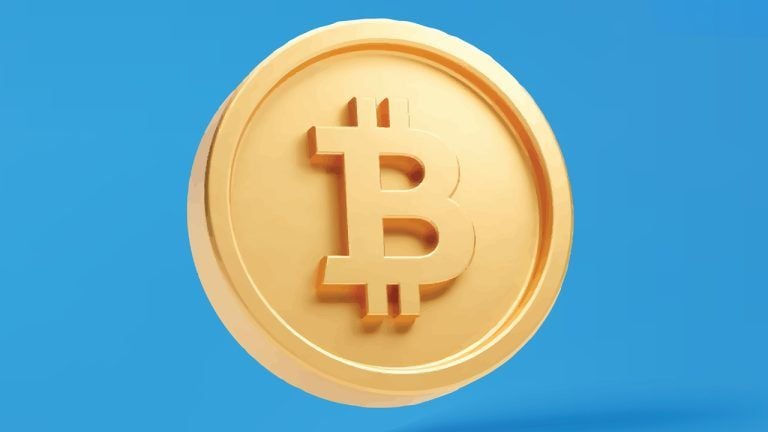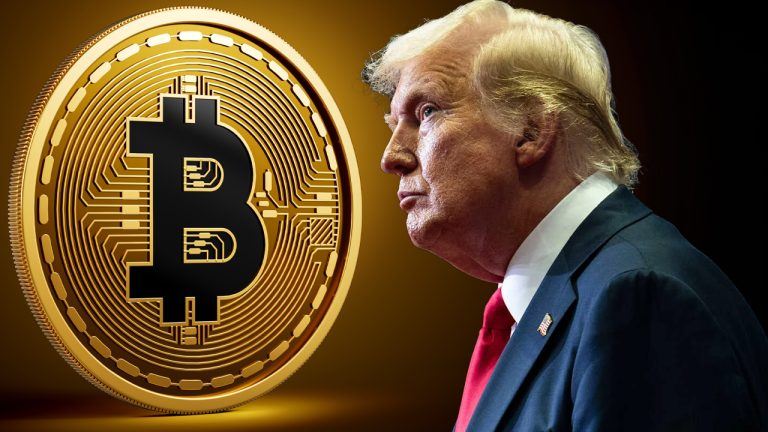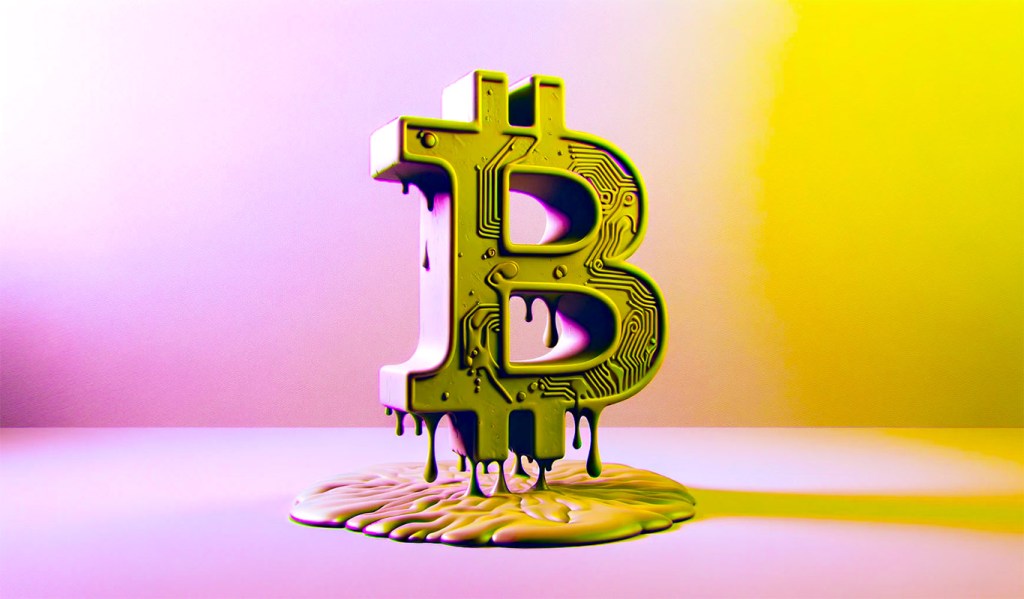Salvadoran Basic Goods Basket Rose to Historic Highs in June
 The price of the Salvadoran basic goods basket, a group of foods and vegetables considered essential, rose to all-time high levels in June. The increase was pushed due to the price hikes in vegetables, going over the $260 barrier and reaching $262.17. President Bukele recently expanded the action of the Farmers’ Markets and slashed import […]
The price of the Salvadoran basic goods basket, a group of foods and vegetables considered essential, rose to all-time high levels in June. The increase was pushed due to the price hikes in vegetables, going over the $260 barrier and reaching $262.17. President Bukele recently expanded the action of the Farmers’ Markets and slashed import […]Michigan Retirement System Invests $6.59M in Ark Invest’s Bitcoin Fund
 According to the latest U.S. Securities and Exchange Commission (SEC) 13-F filing from Ark Invest’s and 21shares’ ARKB fund, the State of Michigan Retirement System (SMRS) acquired approximately $6.59 million in ARKB shares. This news follows an announcement by Steven Fulop, the mayor of Jersey City, New Jersey, that the city’s pension fund will invest […]
According to the latest U.S. Securities and Exchange Commission (SEC) 13-F filing from Ark Invest’s and 21shares’ ARKB fund, the State of Michigan Retirement System (SMRS) acquired approximately $6.59 million in ARKB shares. This news follows an announcement by Steven Fulop, the mayor of Jersey City, New Jersey, that the city’s pension fund will invest […]Bitcoin forming ‘massive’ bullish wedge pattern as trader eyes $85K

Bitcoin’s bullish pattern on the chart is signaling to crypto traders a potential 25% price increase from its current level.
Bitcoin’s price is forming a bullish wedge pattern while lingering near its 2021 all-time highs, with hopeful traders eyeing a price target of $85,000 next.
“Bitcoin has formed a massive descending broadening wedge, right around the previous cycle highs,” pseudonymous crypto trader Jelle wrote in a July 26 X post, which is typically seen as a reversal pattern where Bitcoin’s (BTC) price forms a sequence of lower highs and lower lows, with the gap widening as it falls, with the expectation of a upward trend reversal.
“Price looks eager for a breakout — and once it does, I expect the move to be sharp. First target, $85,000,” they added, which is around 15% above Bitcoin’s current all-time high $73,679, which it reached in March.
Low-Cap Altcoin Surges by More Than 27% This Week Amid New Involvement in CBDC Project

One low-cap altcoin surged by more than 27% this week amid its newly announced involvement in a central bank digital currency (CBDC) project. Coti (COTI) is a privacy-focused layer-2 network built on Ethereum (ETH). The project’s native asset is trading at $0.118 at time of writing, up from $0.0929 one week ago. Coti announced on […]
The post Low-Cap Altcoin Surges by More Than 27% This Week Amid New Involvement in CBDC Project appeared first on The Daily Hodl.
Crypto Will Die In America If This Happens
➡️ Use Code DC10 to get 10% off Arculus Wallet – https://linktw.in/EtSqux ➡️ Houdini Swap – The Best Way To Swap Coins – https://houdiniswap.com/?utm_source=kol&utm_medium=qr_code&utm_campaign=DiscoverCrypto ➡️Join this channel to get access to perks: https://www.youtube.com/channel/UCjemQfjaXAzA-95RKoy9n_g/join ➡️Come trade with us on Blofin, where whales are made: https://partner.blofin.com/d/DiscoverCrypto 📲 Follow the OFFICIAL Discover Crypto Socials: Twitter (X): https://twitter.com/DiscoverCrypto_ Tik […]
RFK Jr. promises BTC strategic reserve, dollar backed by hard assets

The presidential hopeful gave Bitcoin eloquent praise as a future support for the US economy and way to fix broken American money and society.
Independent presidential candidate Robert F. Kennedy Jr. praised the role Bitcoin could play in improving the US economy and the American way of life as he spoke to an audience at the Bitcoin2024 event on July 26. He promised to sign a number of executive orders on his first day in office to begin the process.
Kennedy would sign an order requiring the Justice Department and US Marshalls to transfer the 204,000 Bitcoin held by the United States to the Federal Reserve to be held as a “strategic asset,” he said. Furthermore, Kennedy said he would also order the Treasury Department to purchase of 500 Bitcoin (BTC) daily until the reserve reaches at least 4 million BTC.
The United States would attain “a position of dominance no other country will be able to usurp” and its Bitcoin reserve would eventually reach a value of “hundreds of trillions of dollars,” he promised.
Bitcoin to Reach $87K in 2024 and $383K by 2030, Finder Survey Predicts
 Bitcoin (BTC) is poised for substantial price increases in the coming years, according to a recent survey by Finder. The survey, conducted in July 2024, gathered insights from 32 crypto industry specialists, predicting that bitcoin could reach $87,169 by the end of 2024 and surge to $383,514 by 2030. Crypto Specialists Predict Bullish Long-Term Outlook […]
Bitcoin (BTC) is poised for substantial price increases in the coming years, according to a recent survey by Finder. The survey, conducted in July 2024, gathered insights from 32 crypto industry specialists, predicting that bitcoin could reach $87,169 by the end of 2024 and surge to $383,514 by 2030. Crypto Specialists Predict Bullish Long-Term Outlook […]SEC approves Grayscale Bitcoin Mini Trust for Trading on NYSE Arca

Grayscale must await final regulatory signoff on its registration filing before listing the fund
The United States Securities and Exchange Commission (SEC) approved Grayscale’s newest spot Bitcoin (BTC) exchange-traded fund (ETF) — Grayscale Bitcoin Mini Trust (BTC) — for listing on the New York Stock Exchange’s (NYSE) Arca electronic trading platform, according to a July 26 filing.
The approval is an important milestone for Grayscale, which announced plans on July 19 to spin off a portion of its flagship Bitcoin fund, Grayscale Bitcoin Trust (GBTC), into the new Mini Trust.
“Grayscale is excited to share that the [SEC] has approved NYES Arca’s Form 19b-4 application to list and trade shares of Grayscale Bitcoin Mini Trust (proposed ticker: BTC),” a spokesperson told Cointelegraph in an email.
‘We have to get rid of the folks who are in the way’ — Senators speak at Bitcoin 2024

The two Republican senators claimed that if their party wins control of the Senate, they will stop the SEC’s “regulation by enforcement.”
Republican United States Senators Cynthia Lummis and Tim Scott spoke at the Bitcoin 2024 conference on July 26, stating that the current leadership of the Senate Banking Committee is “in the way” of American innovation, especially as it relates to Bitcoin. “We have to get rid of the folks who are in the way,” Tim Scott stated, implying that voters should throw out the Democratic majority in the November elections.
Senator Lummis claimed that if Republicans win a majority in the November elections, they will appoint Scott as Chairman of the Banking Committee, which will put an end to anti-Bitcoin (BTC) legislation coming out of that body. “Republicans are going to be in the majority next year,” she stated. “And Senator Tim Scott is going to be the chairman of the Senate Banking Committee.”
Scott vowed that if he is elected chairman, he will use his power to put pro-Bitcoin legislation up for a vote and pass it through the Senate if possible. “The one thing I will absolutely guarantee will be done is watching your legislation get a vote, pass the Banking Committee, and we’re going to fight to make it a law in the United States of America,” he stated, claiming that this would accomplish “setting Bitcoin free at home, […] free at last.”
US Bitcoin ETFs Report $31.16M Inflows on Thursday
 Based on Thursday’s data, the 11 U.S. spot bitcoin exchange-traded funds (ETFs) experienced another day of net inflows following Wednesday’s increases. Statistics indicate that $31.16 million was absorbed primarily by Blackrock’s IBIT, although the amount would have been higher if not for the reduction seen by Grayscale’s GBTC. Bitcoin ETF Market Prints $59B Total Value […]
Based on Thursday’s data, the 11 U.S. spot bitcoin exchange-traded funds (ETFs) experienced another day of net inflows following Wednesday’s increases. Statistics indicate that $31.16 million was absorbed primarily by Blackrock’s IBIT, although the amount would have been higher if not for the reduction seen by Grayscale’s GBTC. Bitcoin ETF Market Prints $59B Total Value […]Bitcoin Peaks at $67,991 Ahead of Trump’s Bitcoin Conference Appearance
 Before former President Donald Trump’s appearance at the Bitcoin 2024 conference in Nashville, the price of bitcoin (BTC) climbed to an intraday peak of $67,991 per unit. This increase led to the liquidation of approximately $55.21 million in bitcoin short positions, out of a total of $79.10 million in short bets across the crypto economy […]
Before former President Donald Trump’s appearance at the Bitcoin 2024 conference in Nashville, the price of bitcoin (BTC) climbed to an intraday peak of $67,991 per unit. This increase led to the liquidation of approximately $55.21 million in bitcoin short positions, out of a total of $79.10 million in short bets across the crypto economy […]Is This the Official Olympics Token? The Meme Games Token Pumps Past $250K in Presale
 Just when you thought the crypto market had seen it all, along comes a project that’s part meme, part Olympics tribute. The Meme Games (MGMES) is generating enormous traction in its presale phase – and just passed the $250,000 milestone. Meme Culture Meets Sports with The Meme Games This project is like someone tossed the […]
Just when you thought the crypto market had seen it all, along comes a project that’s part meme, part Olympics tribute. The Meme Games (MGMES) is generating enormous traction in its presale phase – and just passed the $250,000 milestone. Meme Culture Meets Sports with The Meme Games This project is like someone tossed the […]US Ethereum ETFs See Continued Outflows Led by Grayscale’s ETHE
 On Thursday, U.S. spot ethereum exchange-traded funds (ETFs) experienced another day of net outflows following Grayscale’s Ethereum Trust (ETHE) outpacing gains observed by other funds. According to sosovalue.xyz, the nine ETFs saw $152.3 million exit during Thursday’s trading sessions. Grayscale ETHE’s Third Day of Outflows Contributes to $178M Negative Net Inflow Grayscale’s ETHE marked its […]
On Thursday, U.S. spot ethereum exchange-traded funds (ETFs) experienced another day of net outflows following Grayscale’s Ethereum Trust (ETHE) outpacing gains observed by other funds. According to sosovalue.xyz, the nine ETFs saw $152.3 million exit during Thursday’s trading sessions. Grayscale ETHE’s Third Day of Outflows Contributes to $178M Negative Net Inflow Grayscale’s ETHE marked its […]Ledger Releases New Touchscreen Hardware Crypto Wallet

A prominent crypto firm is launching a new crypto hardware wallet with touchscreen capabilities. In a new announcement on the social media platform X, Ledger says that it is releasing a new product in its line of crypto wallets equipped with touchscreens. “Ledger Flex is here. Alongside Ledger Stax, Ledger Flex is the latest addition […]
The post Ledger Releases New Touchscreen Hardware Crypto Wallet appeared first on The Daily Hodl.
No BTC strategic reserve announcement from Sen. Lummis—Bitcoin 2024

Senator Lummis recently authored a report highlighting the benefit of the Bitcoin mining industry and denouncing Biden’s proposed 30% tax.
Senator Cynthia Lummis delivered her highly anticipated address at the Bitcoin 2024 conference in Nashville alongside Senator Tim Scott. However, the presentation did not feature the rumored introduction of legislation establishing Bitcoin as a strategic reserve asset of the United States.
The Wyoming Senator criticized the Securities and Exchange Commission (SEC) for regulating the industry through enforcement action rather than the rule of law, before shifting her focus back to the government control of money and touting the Republican Party’s revised platform protecting digital asset ownership and custody.
Lummis, a longtime ally of the crypto industry, and Scott also touched on the role the Bitcoin mining industry plays in seeking out novel forms of energy and strengthening the United States’ critical energy infrastructure, a recurring theme at this year’s conference.
‘Cast a vote, but don’t join a cult’ — Edward Snowden at Bitcoin 2024

The former National Security Agency contractor did not name any particular US or international lawmakers but warned many didn’t belong to the “tribe” of Bitcoiners.
Edward Snowden, the former National Security Agency contractor who has been in exile in Russia since 2013, warned attendees at the Bitcoin 2024 conference about politicians trying to woo them over crypto.
In a July 26 speech held virtually at the crypto conference, Snowden said many lawmakers were trying to earn the “love” of Bitcoiners, hinting at those attending the Nashville event. He did not explicitly refer to US or international politicians, though US Senators Bill Hagerty, Cynthia Lummis, and Tim Scott addressed attendees in different panels shortly before Snowden spoke.
“Cast a vote, but don’t join a cult,” said Snowden. “They are not our tribe. They are not your personality. They have their own interests, their own values, their own things they’re chasing. Try to get what you need from them, but don’t give yourself to them, even if you have to vote for them.”
Key altcoin season metric in accumulation mode as Bitcoin dominance peaks

Altcoins are in accumulation territory after experiencing a drawdown over the last 3 months.
The altcoin market is currently at the “reaccumulation stage,” which, after reclaiming a key support area, could move on to the “second leg of the cycle,” according to crypto traders.
“Altcoins are only up 58% since they broke out after 525 days of accumulation,” independent crypto trader Mags said in part of their July 25 post on X.
The accumulation stage occurs when the market has bottomed out, and prices hit local bottoms, as reflected by a 33% drop of TOTAL2 (total market capitalization of all cryptocurrencies, excluding Bitcoin) since March 11. It is marked by a period of relative stability, where investors buy on the dips in anticipation of future price increases.
Michael Saylor ups Bitcoin price forecast to $13 million in mega-bullish keynote — Bitcoin 2024

“Triple maxi” Bitcoin bulls could earn a net worth of $214 million by 2045, Saylor said.
Michael Saylor, the outspoken co-founder of business intelligence company MicroStrategy, predicted Bitcoin (BTC) will reach $13 million per coin by 2045 during a mega-bullish keynote speech on July 26 at the Bitcoin 2024 conference.
Saylor’s forecast — which upgrades his $10 million estimate in June — is only a base case. “It could be a $3 million bear case, it could be a $49 million bull case,” according to Saylor, who urged listeners at the Nashville, Tennessee event to become “triple maxi” Bitcoin bulls.
Related: Bitcoin offers ‘economic immortality,’ will reach $10M per coin — Michael Saylor
Bitcoin Whales Accumulating BTC at ‘Unprecedented Level,’ According to CryptoQuant CEO

Bitcoin (BTC) is in an accumulation phase, according to the chief executive of CryptoQuant. Ki Young Ju tells his 356,900 followers on the social media platform X that 358,000 BTC moved to permanent holder addresses in the past month. The CEO notes global spot exchange-traded (ETF) inflows in July were only 53,000 BTC. “Though not […]
The post Bitcoin Whales Accumulating BTC at ‘Unprecedented Level,’ According to CryptoQuant CEO appeared first on The Daily Hodl.
Bitcoin Market Cap to surpass gold—Anthony Scaramucci

Bitcoin currently has a market capitalization of roughly $1.3 trillion, while the entire crypto market cap is roughly $2.4 trillion.
On day 2 of the Bitcoin 2024 conference in Nashville Tenessee, Anthony Scaramucci shared his belief that Bitcoin will overtake the total market capitalization of gold.
The SkyBridge Capital founder explained that Bitcoin (BTC) should not trade to a market cap similar to chipmaking giant Nvidia or Apple because Bitcoin is “an asset class” and not a company.
According to Scaramucci, the current market capitalization of gold rests between $15 trillion-$16 trillion, a number that Bitcoin should be able to overtake in roughly a decade. A similar prediction was forecasted by Anthony Pompliano in 2020, who likewise claimed Bitcoin would flip gold in less than a decade.
Bitcoin Could See More Upside After Bouncing From Major Support Zone, According to Trader – Here Are His Targets

A widely followed crypto analyst says that Bitcoin (BTC) could have further upside after rebounding off a major support zone. In a new strategy session, crypto trader Rekt Capital tells his 483,300 followers on the social media platform X that the crypto king could shoot up past $71,000 over the Labor Day weekend. “Bitcoin successfully […]
The post Bitcoin Could See More Upside After Bouncing From Major Support Zone, According to Trader – Here Are His Targets appeared first on The Daily Hodl.
UK Financial Regulator Slaps Coinbase Subsidiary With $4,500,000 Fine for Onboarding High-Risk Customers

UK’s Financial Conduct Authority (FCA) says it imposed a fine of £3,503,546 or about $4.5 million on CB Payments Limited (CBPL) for violating the voluntary agreement (VREQ) that the firm and the regulator entered into in late 2020. CBPL, a subsidiary of crypto exchange Coinbase, provides e-money and payment services to its customers, but the […]
The post UK Financial Regulator Slaps Coinbase Subsidiary With $4,500,000 Fine for Onboarding High-Risk Customers appeared first on The Daily Hodl.
The Real Crypto Candidate? Presidential Hopeful Robert F. Kennedy Jr Says He Puts ‘Most’ of His Wealth Into BTC

One US Presidential hopeful is solidifying his spot as the top supporter of Bitcoin (BTC) and crypto. Earlier today, independent Presidential candidate Robert F. Kennedy Jr., former President John F. Kennedy’s nephew, spoke on digital assets at the BTC Nashville convention. “I am a huge supporter of Bitcoin. I have most of my wealth in […]
The post The Real Crypto Candidate? Presidential Hopeful Robert F. Kennedy Jr Says He Puts ‘Most’ of His Wealth Into BTC appeared first on The Daily Hodl.
Fed drops enforcement action against Silvergate
The Fed’s decision to drop enforcement against Silvergate highlights ongoing regulatory scrutiny in the crypto banking sector, with the SEC still pursuing legal action.
The post Fed drops enforcement action against Silvergate appeared first on Crypto Briefing.
Crypto Analyst Says Top Ethereum Rival Mimicking 2021-Style Price Action, Could Explode by Over 400% ‘Soon’

A widely followed crypto analyst believes that one Ethereum (ETH) rival is gearing up for a parabolic move. In a new strategy session, crypto trader Ali Martinez tells his 68,300 followers on the social media platform X that Solana (SOL) could put up a more than 400% gain based on historical precedence. “Solana is looking […]
The post Crypto Analyst Says Top Ethereum Rival Mimicking 2021-Style Price Action, Could Explode by Over 400% ‘Soon’ appeared first on The Daily Hodl.
Ledger launches new wallet with secure, contactless E Ink touchscreen displays
Ledger celebrates its 10th anniversary with the launch of Ledger Flex, an NFC-enabled wallet featuring secure E Ink touchscreen displays.
The post Ledger launches new wallet with secure, contactless E Ink touchscreen displays appeared first on Crypto Briefing.
JPMorgan Chase, Wells Fargo and Bank of America Refuse To Reimburse $863,000,000 To Customers, Accused of ‘Repeated, Relentless Failure’ To Protect Victims of Fraud

A US Senate investigation is shedding light on just how often America’s big banks refuse to reimburse victims of fraud. The Permanent Subcommittee on Investigations says JPMorgan Chase, Wells Fargo and Bank of America collectively refused to reimburse $863 million in Zelle transactions that customers reported as fraud between 2021 and 2023. Specifically, the banks […]
The post JPMorgan Chase, Wells Fargo and Bank of America Refuse To Reimburse $863,000,000 To Customers, Accused of ‘Repeated, Relentless Failure’ To Protect Victims of Fraud appeared first on The Daily Hodl.
Crypto consolidation: Understanding the role of exchange aggregators in the market
Exchange aggregators streamline crypto trading, enhancing market efficiency and accessibility while offering privacy and incentivizing user engagement.
The post Crypto consolidation: Understanding the role of exchange aggregators in the market appeared first on Crypto Briefing.
Bitcoin Mining Giant Marathon Digital Buys $100,000,000 Worth of BTC, Announces New ‘Full HODL’ Strategy

Digital asset technology company Marathon Digital (MARA) is stocking up its Bitcoin (BTC) holdings. In a statement, the Florida-headquartered firm says it just bought $100 million worth of the flagship cryptocurrency and currently holds over 20,000 BTC on its balance sheet, which is currently worth over $1.3 billion. The cryptocurrency miner says that aside from […]
The post Bitcoin Mining Giant Marathon Digital Buys $100,000,000 Worth of BTC, Announces New ‘Full HODL’ Strategy appeared first on The Daily Hodl.
Bitcoin & Solana Best Crypto Picks (Crazy Discovery 25x Potential!)
Bitcoin and Solana are pumping. We review top Crypto and altcoin picks you must have in your portfolio in 2024. Live from the Bitcoin Conference in Nashville. ➡️ Use Code DC10 to get 10% off Arculus Wallet – https://linktw.in/EtSqux ➡️ Houdini Swap – The Best Way To Swap Coins – https://houdiniswap.com/?utm_source=kol&utm_medium=qr_code&utm_campaign=DiscoverCrypto ➡️Join this channel to […]


